
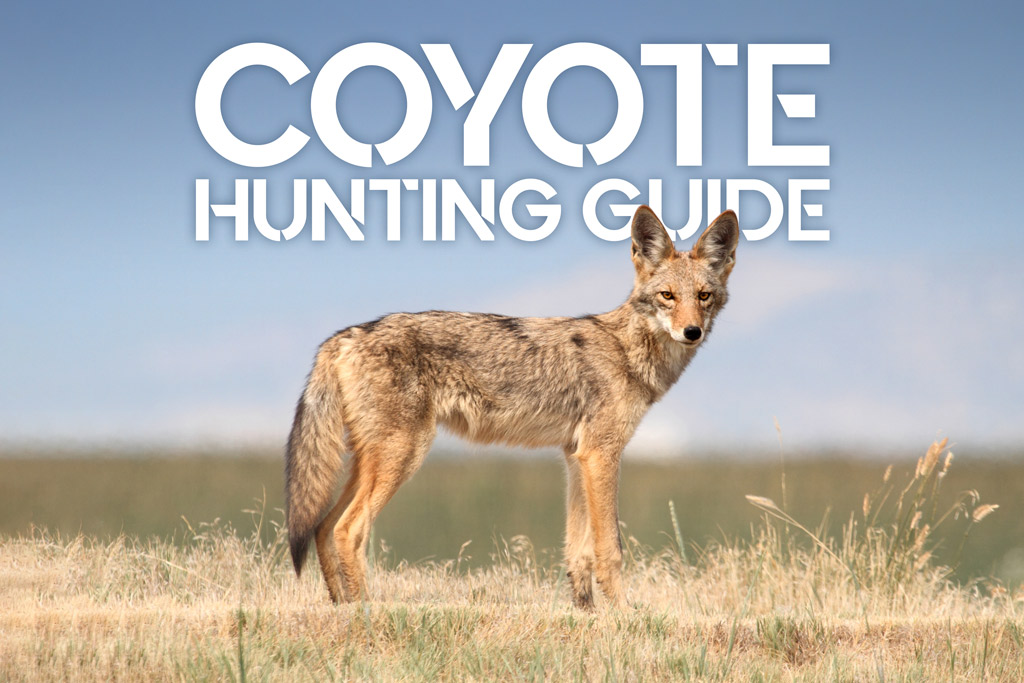
If you live on a farm, there’s nothing worse than being woken up by a coyote raid. These predators can cause a lot of damage, in a short amount of time, to animals twice their size or larger. Coyotes now live in all 49 continental states, and their numbers keep growing. In this coyote hunting guide, we’ll talk tips, tricks, and tactics for hunting these clever “prairie wolves.”
Depending on the circles you run in, coyote hunting might not be common. With that said, coyote hunting is growing in popularity. Some avid deer hunters have even been led away by the adventure of calling in coyotes. There’s something about going after a predator that gives a real thrill.
This article will give a good outline for the complete beginner. We’ll talk about rules, safety, firearms, calls, and techniques for finding coyotes. However, even if you’ve chased your share of coyotes, this article will list useful ideas that will hone your game.
Why Hunt Coyotes?
Coyotes steal young livestock. Families deal with coyotes preying on their pets. Though it’s not common, there are reports of coyotes attacking humans. When you get an unchallenged pack of some bad apples, there’s no telling what they’ll do to survive. Hunters are a critical component to coyote control.
Hunters don’t usually chase coyotes for their meat. Most people don’t like the taste of coyote meat, and there tends to be a stigma about eating “dog meat.” With that said, if you’re at risk of going hungry, you can safely eat coyote meat.
However, there are other practical reasons to hunt coyotes – one being their pelts. You can sell a clean coyote pelt for decent money if you find the right market.
Now that we know the why, it’s time to discuss the how.
Coyote Hunting Guide
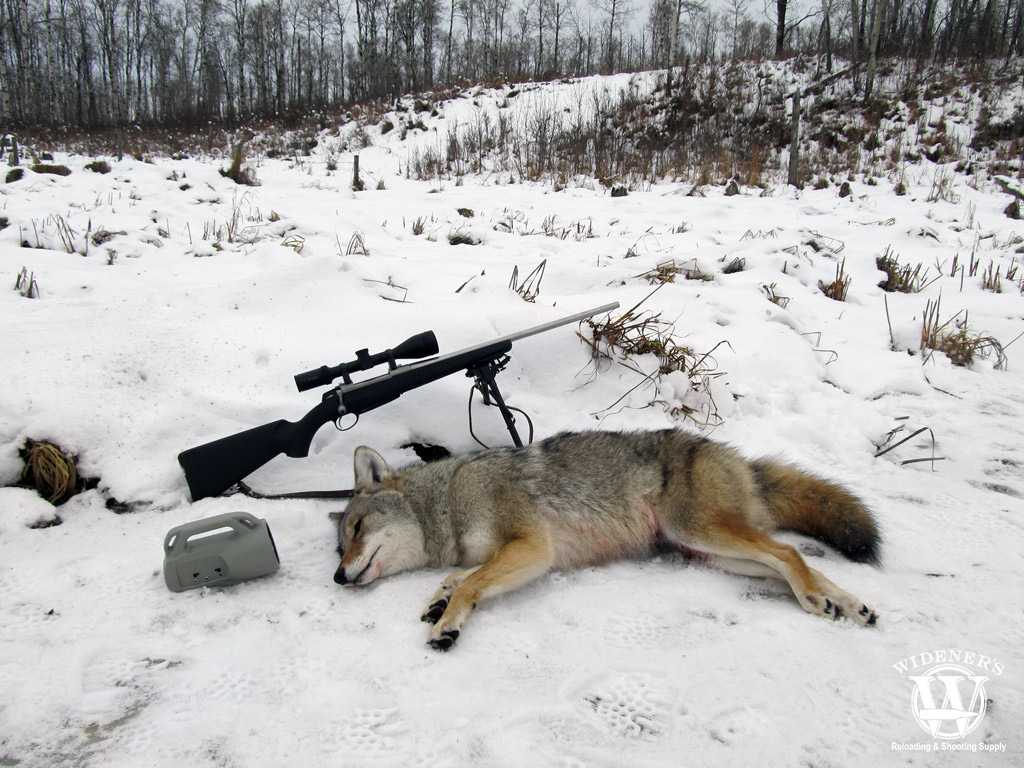
The coyote, or “prairie wolf,” is a canine predator that can grow as large as 48″ and weigh up to 40 Lbs.
Don’t underestimate the cunning coyote. They’re smart. If you get overconfident, the coyote can deliver a humbling hunting experience. When you respect the animal, you’re more likely to have success.
Here’s a list of topics we’ll cover:
- Getting To Know The Coyote
- Habitat For Coyotes
- Coyote Diet
- Regulations For Coyote Hunting
- Guns & Ammo For Coyote Hunting
- Additional Hunting Equipment
- Where To Aim When Shooting A Coyote
- Coyote Hunting Tactics
- Skinning A Coyote
- Selling Coyote Pelts
Alright, let’s look at these steps in detail.
Getting To Know The Coyote
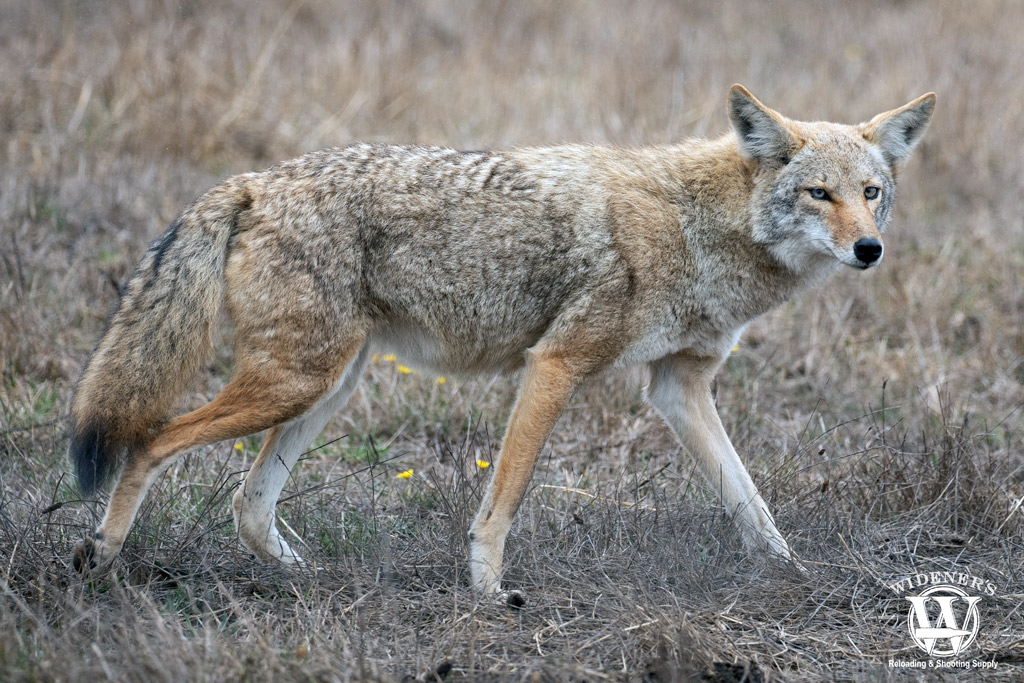
Coyotes tend to stay in wooded areas but will travel into suburban environments in search of food.
The coyote is not a huge animal. It’s a fair bit bigger than the fox and a fair bit smaller than a wolf. Coyotes often travel in packs and will create dens. Though they do form packs at different times of the year, coyotes don’t create packs as often as wolves.
Male coyotes are slightly larger than females. Aside from the difference in size, there are no major physical differences between males and females. Coyotes will average about 25 pounds. However, you might find some as large as 50 pounds.
In general, coyotes have a brown and grey coat with a light-colored front and underbelly. Coyotes have pointy ears and a black-tipped tail. Game experts sometimes described them as sharing features of a small German shepherd.
Note: There is such a thing as a wolf and coyote hybrid. While this may seem crazy, wolves and coyotes don’t regularly breed – the “coywolf” is a coyote with some wolf DNA.
Habitat For Coyotes
Where do coyotes live? Everywhere. Some people have reported coyotes in public parks and cities. While you won’t find coyotes walking down the sidewalks (not usually), you can be sure they are closer than you think.
Coyotes like to make dens in the side of hills, large logs, underneath an abandoned building, or by reusing another animal’s old burrow.
Seeing a coyote and hunting a coyote are two different things. And, as any deer hunter will tell you – the instant November rolls around, it’s like an extinction occurred.
Coyotes are carnivores. However, they don’t have much pride in their food, and they will take almost any opportunity to get a meal. Coyotes primarily feast on mice, moles, rabbits, and squirrels if they can find them.
Coyotes enjoy eating fresh meat. With that said, they will eat rotten meat if necessary. While coyotes are 90 percent carnivores, they don’t pass down herbal meals. For example, they will eat berries and shrubs – anything that provides nutritional value.
Note: Carrion is the term used to describe rotten meat. The coyote’s unstructured, sometimes gross eating habits are one of the reasons humans rarely consume coyote meat.
Daily Habits
Coyotes are largely nocturnal, which is one reason they aren’t always noticeable, even when their population is substantial. However, coyotes are active during the day, albeit more careful.
You’ll notice coyote activity in the morning and evening. If it’s summertime, you might hear or see a group of them. They tend to stay together while raising young pups.
Large Property
Coyotes can move quickly, and they like to travel. Once a pup grows, it might travel 100 miles from its original den. Adult males will have some 20 square miles of territory, with females traveling slightly less.
You’ll have the most luck finding them on large plots of land. While you certainly can find coyotes in smaller areas, if they catch your scent, they could be long gone for a long time.
Regulations For Coyote Hunting
States offer lenient regulations around coyote hunting. Many states allow hunters to hunt them year-round (states often regulate trapping season to specific months). But some states don’t stop there. Areas like Utah have even placed a bounty on coyotes, paying hunters who participate in the program.
Further, many states allow property owners (and anyone they give written permission) to hunt coyotes on their land without a license. However, always double-check with your state, as some areas say the coyote must be harming your land before you can take them.
Yes, coyote regulations are loose, but coyotes are not a free-for-all. There are still rules about night hunting and trapping. Be sure to give your state a call and double-check your local laws.
Guns & Ammo For Coyote Hunting
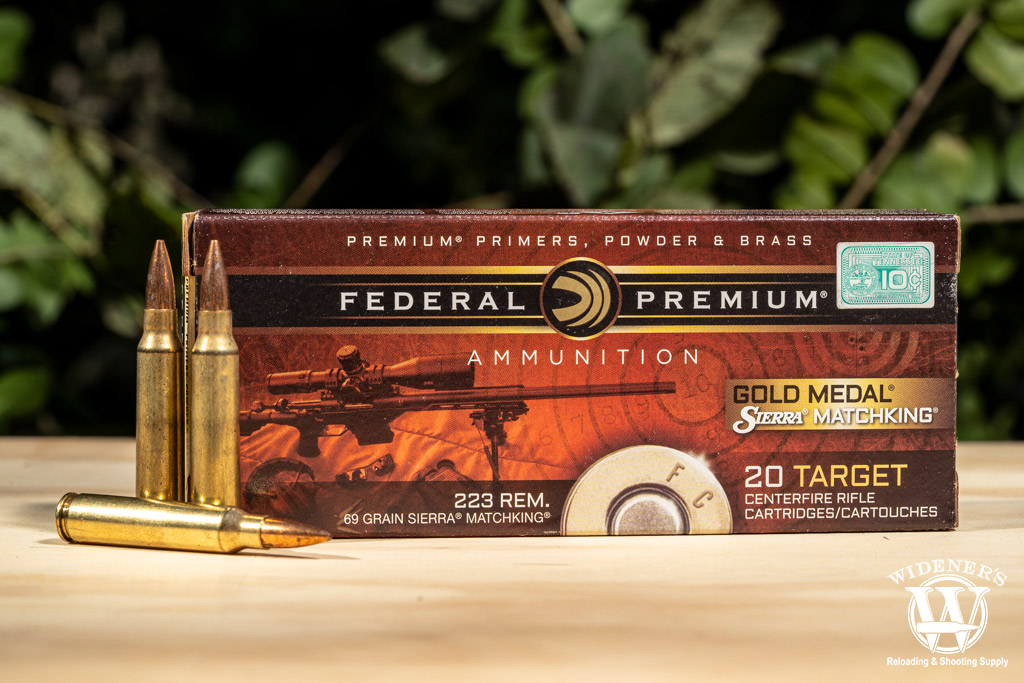
Many hunters like .243 for coyote hunting, however, .223 and classic .22-250 will get the job done as well.
There are many weapons you could choose for the coyote. Some are more suited than others. If you’re looking to reduce the population, shooting them with whatever you have close can get the job done. However, if you’re looking to go on a focused coyote hunt, it helps to know your options.
Shotgun: In the dense forest, or for a change of pace, a shotgun can certainly get the job done. A 12 gauge with #00 or #4 buckshot loads are common. Some who hunt for fur even argue the shotgun does less damage, as there isn’t a large exit wound.
Rifle: Many seasoned coyote hunters believe .243 ammo is the perfect coyote hunting round. It provides range, accuracy, and power. However, .223 is also very popular – as well as the classic varmint round, .22-250.
Let’s talk about some other common coyote hunting gear.
Additional Hunting Equipment
There’s more to hunting coyotes than a firearm. We should note here that this article is about actively hunting coyotes, not trapping. Trapping requires different techniques.
Hunting coyotes is usually based on calls and decoys. However, some hunters use dogs or night vision equipment (double-check legality in your state).
Here are several common types of gear:
- Electronic call recordings. While some sportsmen might not believe in electronic calls, recorded calls make it easy for beginners to get started (also, they still require technique – more about that later).
- Decoys. Coyotes have incredible eyes, many times better than humans. Hunters often place a decoy to keep the coyote’s eyes on something else.
- Tripod for a weapon. You’re more likely to get a good shot with a tripod. Also, it allows you to keep your firearm at the ready. Coyotes move fast.
- Seat. A small hunting chair will raise you enough to get a better field of vision. Coyotes move low, with their tails down – you need every advantage.
Now, it’s time to talk tactics.
Where To Shoot A Coyote
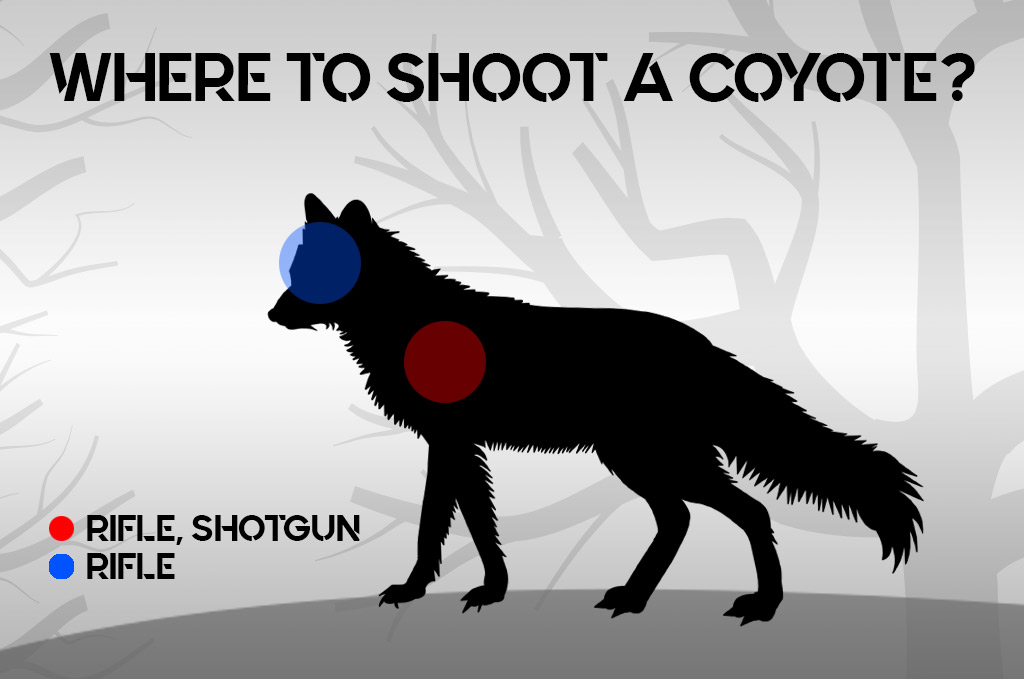
A headshot with a rifle at close range will drop a coyote. Otherwise, aim for the front shoulder to disrupt the animal’s vital organs.
When hunting coyotes, your goal is to strike the vitals. Unlike a bear or wild boar, the coyote is a smaller animal. Their low body weight doesn’t give them a lot of firm defenses against rifle rounds. Usually, if you get a decent hit on a coyote with a .243, that animal is going down.
A headshot isn’t a bad idea if you’re close enough. However, you’ll also get the job done with a broadside right on the shoulder. A coyote’s vitals are slightly further forward than a deer.
Coyote vs. wolf: Obviously, wolves are larger than coyotes. However, another way to tell the difference is to look at the tail. Coyotes run with their tails down, while wolves keep their tail up.
Coyote Hunting Tips
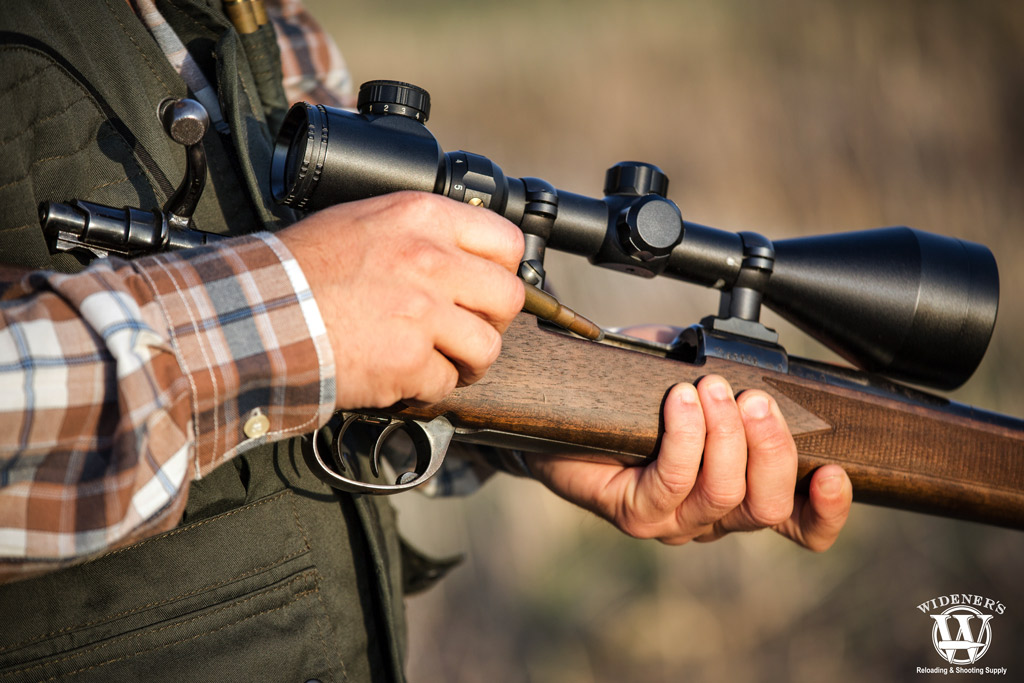
Scouting and tracking coyote movements in your area can provide a lot of knowledge when it comes time to hunt.
It’s smart to scout the area before you hunt a coyote. Be careful not to create a nuisance. Do your scouting before the actual hunt. Your goal is to find several areas you believe would be good coyote hunting spots – called “stands.” Throughout the day, you’ll sit at a stand, call in coyotes for a while, and then move on to another stand.
First, look for slight elevation, with yourself at the top. We aren’t talking mountains, just enough hill to give you a vantage point. Next, you want to be up against something – this might be a solid fence with good bushes, or maybe it’s a clump of trees. You want to control the direction of the coyote, and you don’t want them sneaking up on you.
Also, think about the wind. Face wind and crosswind are the most desirable. When a coyote smells you, it’s gone. Finally, make sure you know what’s beyond your target. This is hunter’s safety 101, but it’s worth repeating for coyotes, as these hunts can be fast-paced.
Calling Coyotes
You’ve found a few good spots, and it’s time to hunt. Consider the wind, set up your tripod, and set up your call.
For your call, don’t set it next to you. Place it out away, forward, and then into the wind. When coyotes are closing in on the call, they often curve around the sound, trying to scout things out. Your goal is to curve them right into your shooting field.
Next, it’s time to start playing calls. Most electronic calls have a remote control so that you can alternate between calls. If you’re curious about this technique, here’s a video showing you the different coyote calls. Your goal is to alternate between effective calls, which usually consist of distressed rabbits, or a coyote sound. Some seasons will warrant different calls.
Note: You don’t want to face the sun. The goal is to use the sun to help disguise yourself and give you better vision.
Skinning A Coyote
Skinning a coyote is a meticulous process – they don’t like to give up their fur. It’s probably easier to watch this process, so here’s a video on skinning a coyote pelt
Here are a few tips for skinning coyote:
- Watch out for blood. Be careful while you’re carving the hide away from the flesh, as you don’t want to stain everything with blood.
- Use a sharp knife. And don’t be afraid to resharpen the blade. You’ll be doing detailed work, and you need a good slicer.
- Freeze it. Sometimes, freezing the whole carcass first will make it easier to cut away the pelt from the flesh.
If you’re interested in selling the pelt, we’ll share some ideas below.
Selling Coyote Pelts
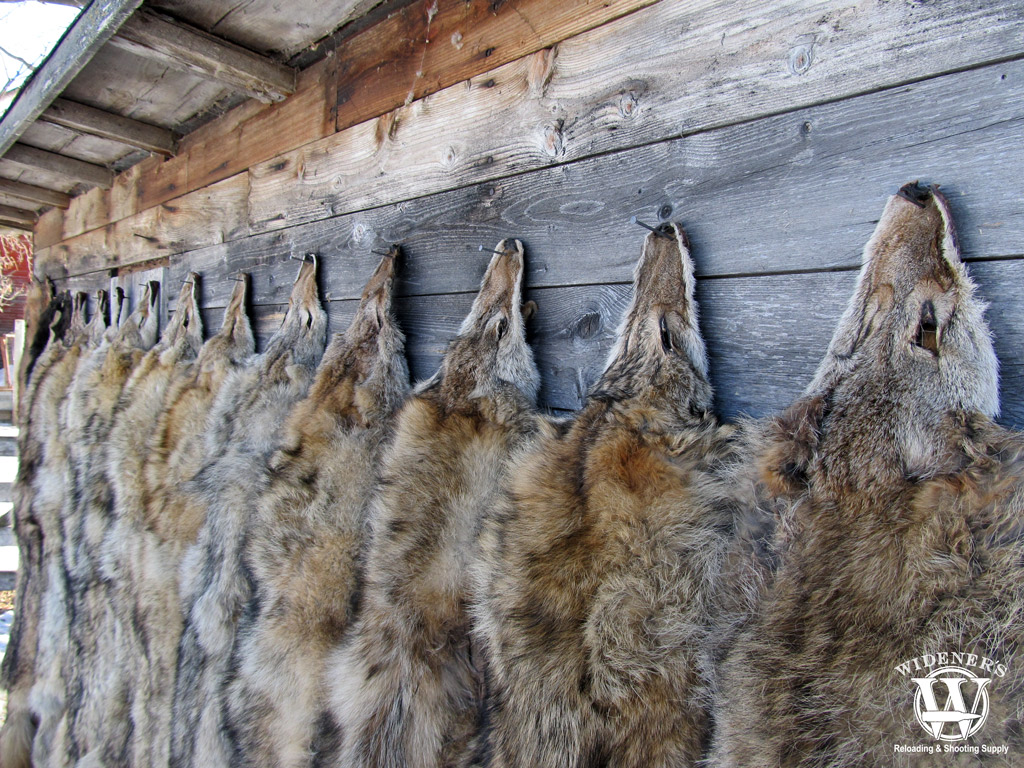
Coyote pelts can be a lucrative venture, depending on the quality of the animal and your location.
Yes, you can sell coyote pelts. These days, some coat manufacturers still use coyote fur for trim. However, there are some things to know.
First, a dirty coyote isn’t going to fetch much. It depends on the season, but an eastern coyote might bring around $18 each. However, nicer, lighter pelts from states like Montana and Colorado could bring $75. Of course, the price will fluctuate on the seasons and the demand. If you’re curious about where to sell fur, certain states have lists of fur buyers on their websites.
Last Word On Hunting Coyotes
Coyotes offer a challenge and a change of pace. If you’ve been a strict deer, duck, and rabbit hunter, then chasing some coyotes might provide the excitement you didn’t know you needed.
The more you learn about coyotes, the better you’ll understand how to call them in and bring them down. Once you get good with your rifle and shotgun, you may try your hand at hunting coyotes with a handgun. If you’re curious, check out our guide to handgun hunting. Stay safe, and happy coyote hunting.


